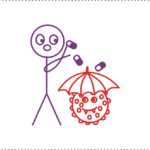Link to Pubmed [PMID] – 27603287
AIDS 2016 11;30(17):2577-2589
OBJECTIVE: In resource-limited countries, antiretroviral therapy (ART) has been scaled up, but individual monitoring is still suboptimal. Here, we studied whether or not ART had an impact on the frequency and selection of drug resistance mutations (DRMs) under these settings. We also examined whether differences exist between HIV-1 genetic variants.
DESIGN: A total of 3736 sequences from individuals failing standard first-line ART (n = 1599, zidovudine/stavudine + lamivudine + neviparine/efavirenz) were analyzed and compared with sequences from reverse transcriptase inhibitor (RTI)-naive individuals (n = 2137) from 10 West and Central African countries.
METHODS: Fisher exact tests and corrections for multiple comparisons were used to assess the significance of associations.
RESULTS: All RTI-DRM from the 2015 International Antiviral Society list, except F227C, and nine mutations from other expert lists were observed to confer extensive resistance and cross-resistance. Five additional independently selected mutations (I94L, L109I, V111L, T139R and T165L) were statistically associated with treatment. The proportion of sequences with multiple mutations and the frequency of all thymidine analog mutations, M184V, certain NNRTIS, I94L and L109I showed substantial increase with time on ART. Only one nucleoside and two nonnucleoside RTI-DRMs differed by subtype/circulating recombinant form.
CONCLUSION: This study validates the global robustness of the actual DRM repertoire, in particular for circulating recombinant form 02 predominating in West and Central Africa, despite our finding of five additional selected mutations. However, long-term ART without virological monitoring clearly leads to the accumulation of mutations and the emergence of additional variations, which limit drug options for treatment and can be transmitted. Improved monitoring and optimization of ART are necessary for the long-term effectiveness of ART.

